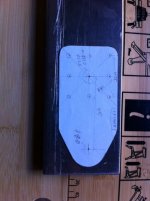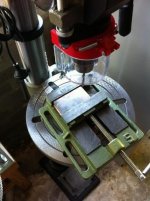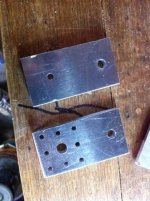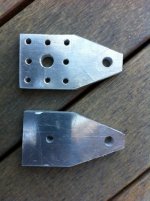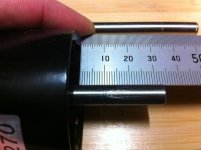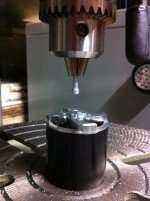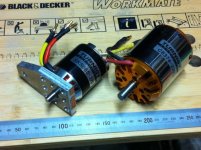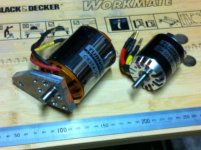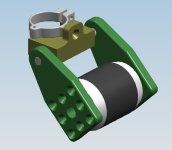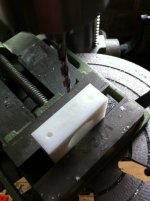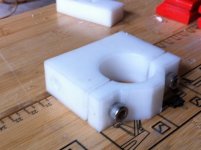adrian_sm
1 MW
Well I just turned it over for the first time on the bike. 
I even got my 4 year old helping out when he asked why his bike doesn't have a motor on it. :lol:
Good news: IT LIVES ! Wheel turned, nothing blew up.
Bad news: Still needs geometry tweaking to work.
Now I know what you mean by "all or nothing" Todd.
I adjusted things so there was a slight gap to the tyre. Twist the throttle and the motor engages but "bounces" off. This was with the bike hanging in the air, but even trying to apply some braking didn't do the trick.
Probably has a lot to do with the geometry as pointed out by Kepler.
I did adjust things to improve the angle, but ran out of real-estate. I will have to move the pivot point lower, and/or decrease the pivot arm radius.
Lucky it is quick to do with MDF and a hand drill.
I really need to get myself a mill.
- Adrian
I even got my 4 year old helping out when he asked why his bike doesn't have a motor on it. :lol:
Good news: IT LIVES ! Wheel turned, nothing blew up.
Bad news: Still needs geometry tweaking to work.
Now I know what you mean by "all or nothing" Todd.
EVTodd said:From everything I've seen it seems like a sliding system has smoother action as it tightens against the tire. It has none of the all or nothing movement some pivot systems have.
I adjusted things so there was a slight gap to the tyre. Twist the throttle and the motor engages but "bounces" off. This was with the bike hanging in the air, but even trying to apply some braking didn't do the trick.
Probably has a lot to do with the geometry as pointed out by Kepler.
Kepler said:I am concerned that you will have trouble getting the motor to pick up on the tire with that geometry. With the drive that low on the tire, I think the climb angle is too high.
I did adjust things to improve the angle, but ran out of real-estate. I will have to move the pivot point lower, and/or decrease the pivot arm radius.
Lucky it is quick to do with MDF and a hand drill.
I really need to get myself a mill.
- Adrian




